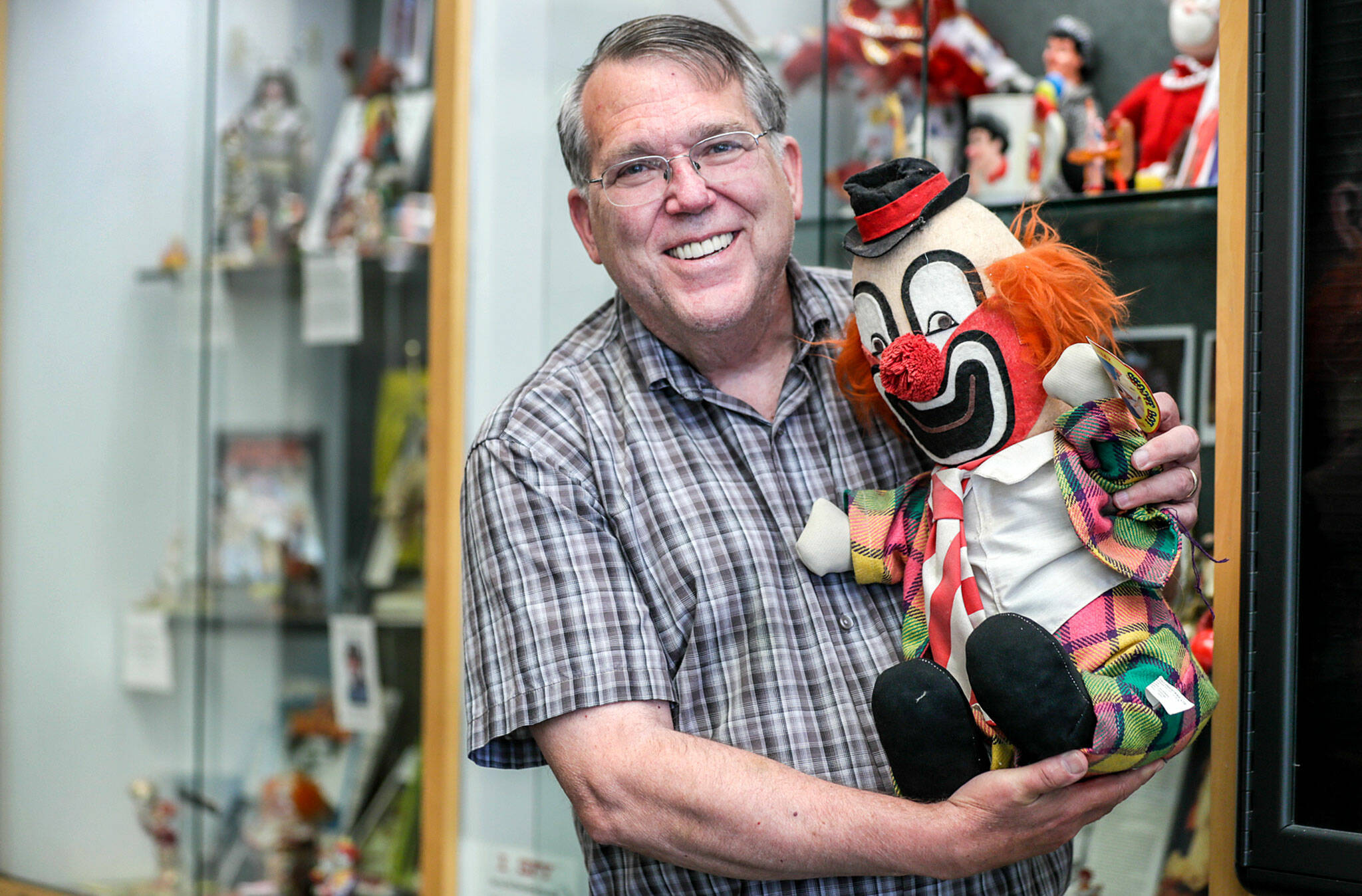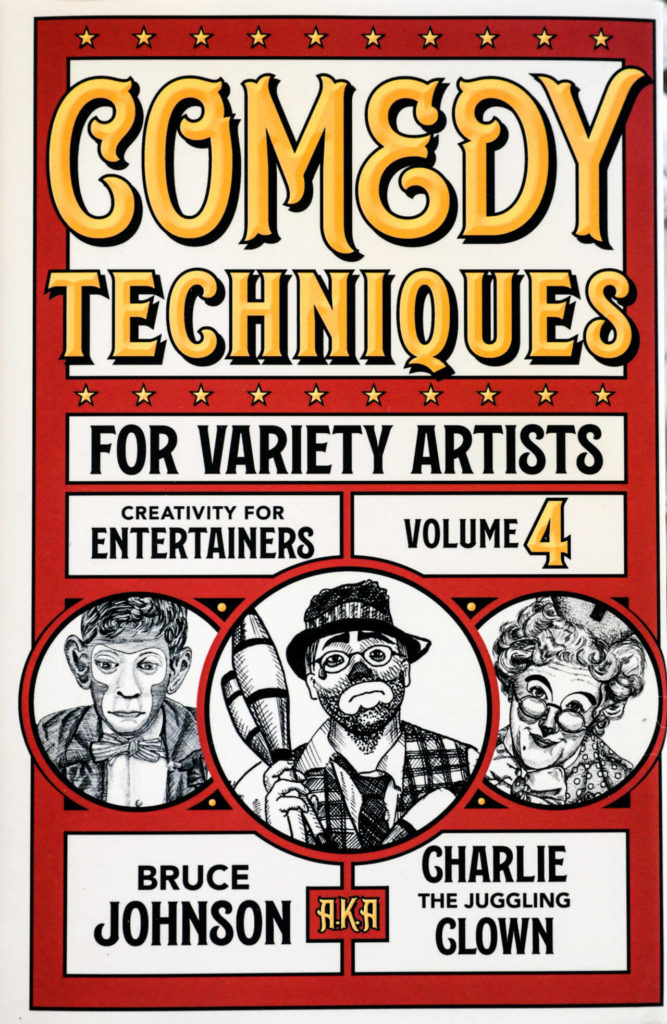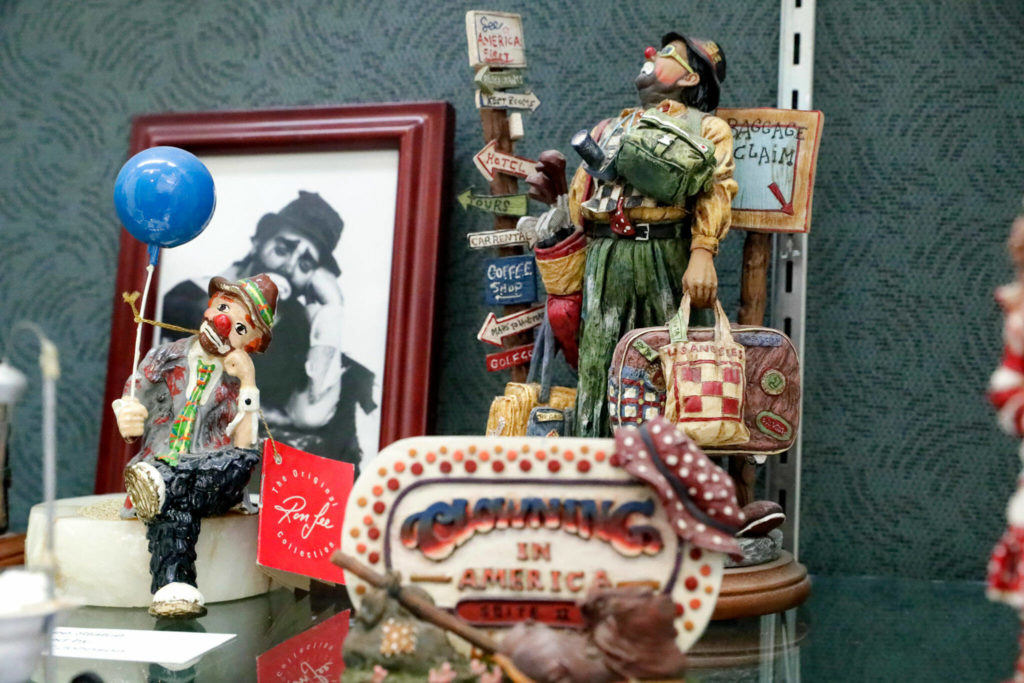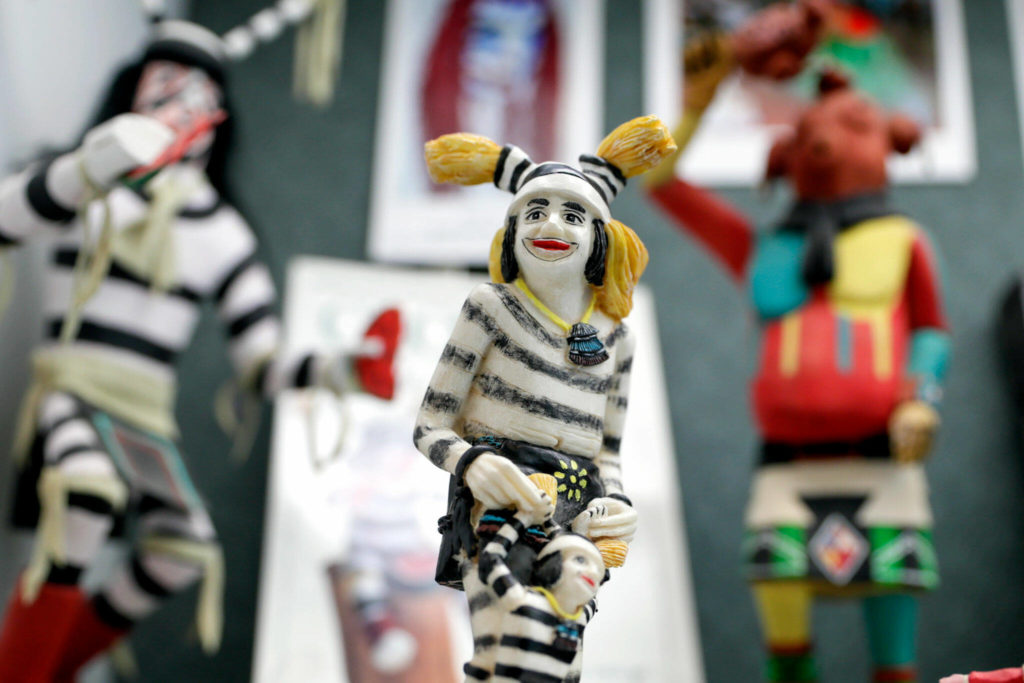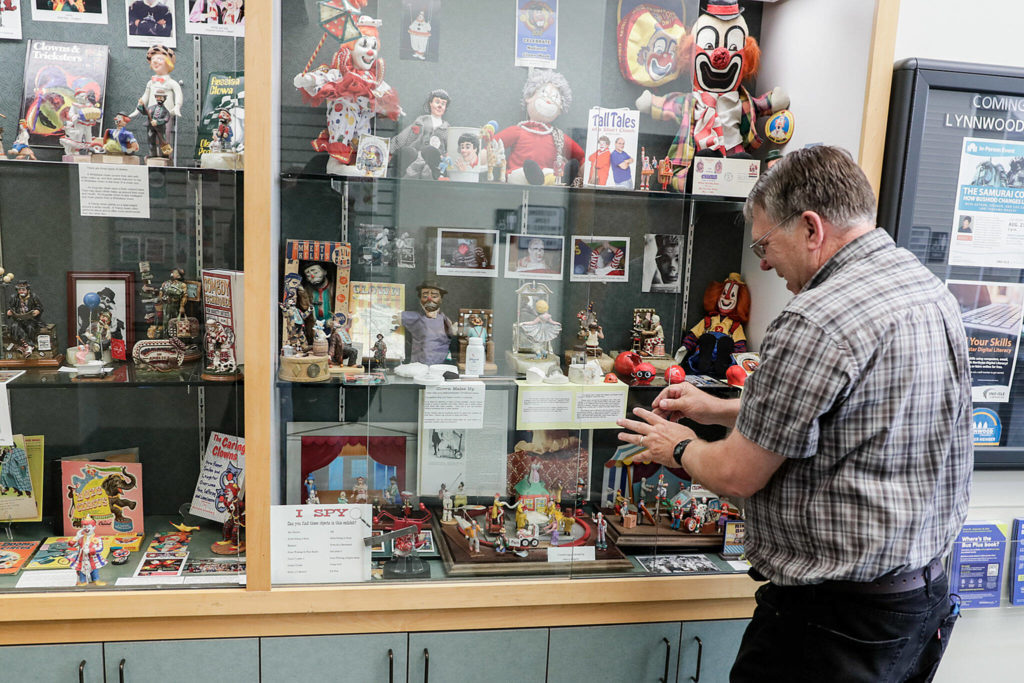LYNNWOOD — At most jobs, people get in trouble for goofing around, but that’s how Bruce Johnson makes his living.
For decades, he dazzled crowds at traveling circuses and amusement parks as “Charlie the Juggling Clown.” He performed at festivals across North America, Europe and Asia, and he’s a 2015 recipient of the World Clown Association Lifetime Achievement Award. Nowadays, as a clown historian, the 68-year-old does more writing than performing.
He is a walking, talking encyclopedia on everything clown. The Lynnwood resident refers to university and museum archives as reference material for the articles he pens for various industry publications.
In May, Johnson published a book detailing the tricks of the trade, and throughout August, he has a clown exhibit on display at the Lynnwood Library.
But why clowns? What motivates a man to become a professional laughing stock?
“I discovered that I was good at it,” Johnson said. That was his takeaway from spending two college summers performing in a traveling circus.
“And to my mother’s shock, I switched from being a pre-med major to a theater major,” he added.
Johnson modeled himself after the traditional Tramp clown, a ragged-looking character inspired by the train-hopping vagabonds of the Great Depression. He took heavy inspiration from other Hobo clowns like Weary Willie (Emmett Kelly) and Freddie the Freeloader (Red Skelton).
His clown name comes from two cartoon characters, Charlie Brown and food mascot Charlie the Tuna.
“Both characters always tried but never succeeded, so I chose Charlie because I wanted that underdog quality in my character,” Johnson said. “And when I started studying clown history, I discovered that in Europe, Tramp clowns are all called Charlie in honor of Charlie Chaplin. So that reconfirmed that I had chosen an appropriate character name.”
It took a few years for Johnson to develop his stage persona. Originally, he played Charlie as a sad clown who people pitied. He was a guy who couldn’t do anything right. But that all changed when Johnson became a proficient juggler. He remembers the crowd’s positive reaction when he first juggled main ring.
“I realized that the audience really did want Charlie to succeed,” he said. “So my view of Charlie changed.”
Charlie transformed from a pathetic loser to a lovable idiot who just needed a little guidance from the audience to get things right. Johnson said audience participation was key to his success. Charlie would hold up signs the wrong way until the crowd yelled: “It’s upside down!”
One bit Charlie became known for was juggling random objects from audience members. He’d juggle people’s shoes and then, in classic Charlie fashion, return them to the wrong people.
Another routine involved Charlie juggling three balls and then holding up a sign asking if the audience wanted to see him juggle four.
“And then I would pull out a big, cut-out number four and juggle with two balls and the four,” Johnson said. “And then the audience would go ‘no, no.’ So then I would eventually juggle the four balls.”
The first shows Johnson ever performed in were campfire skits with the Boy Scouts. In fact, Johnson met an adult leader in the scouts who was a member of a clown club. He invited Johnson to one of his club’s shows and afterward asked if he wanted to participate in a clown workshop the next weekend.
“And I thought, well, I bet I can be at least as good as them,” he said.
So he went. Years later in 1976, Johnson landed a college summer job at Circus Kirk, a traveling circus that exclusively hired student performers and toured the eastern United States.
“It sounded like quite an adventure,” he said.
However, Johnson worked long hours and was constantly traveling, setting up and performing in a different town day after day. And it didn’t help that Johnson was one of the few staff from west of the Mississippi.
“It felt very lonely and homesick,” he said. “At the end of the season, I swore I would never return, and got home and realized how much I missed it and was the first person that signed a contract for the following year.”
After graduating from California State University, Long Beach, Johnson worked for traveling circuses and amusement parks, and he freelanced. He traveled across the country and ended up meeting his wife through work, another clown named Carole “Pookie” Johnson. Their marriage brought Johnson from his home in southern California to the Seattle area, where his wife had grown up.
Today, Johnson still finds time to clown around. He may be officially retired, but he still performs when given the chance. And he teaches at The Original Clown Camp in Wisconsin. But lately he has focused most of his attention on writing on clown history.
The most rewarding part of researching for Johnson is when he makes connections and discovers something relatively unknown. For example, there’s a common misconception that female clowns in the U.S. didn’t exist until the 1970s. But Johnson traced women clowns back before the Civil War and found popular female clowns throughout the 1900s.
“It used to be that women felt like they were put down or prejudiced, and by documenting some of the history I can say, ‘no, you’re part of a proud legacy,’” Johnson said. “And women have been able to take more pride in what they’re doing and that it’s not just something new, it’s something that has existed.”
Johnson wasn’t always the history buff he is today. Over the years he wrote many press releases and magazine articles as a way to publicize and promote his work, but in school he hated history class. His younger self thought it was too focused on memorizing names and dates. That changed when he read “Clowns” by John H. Towsen.
“And reading his book, I realized that history was really stories about fascinating people, and lessons that they learned. So that’s why I started writing for the magazines, to share the lessons I learned through trial and error,” Johnson said.
That was the logic behind Johnson’s new book, “Comedy Techniques for Variety Artists.” It’s a revised edition of the first book he wrote back in 1986, and it’s five times as long. It’s a project he finally found the time to finish after COVID-19 swept the globe, leading to every event getting canceled.
Johnson believes clowns make the world a better place, and he’s working on connecting the next generation of clowns with their historical lineage.
“Clowns,” he said, “make a positive impact on our society.”
For more info, visit charliethejugglingclown.com.
Eric Schucht: 425-339-3477; eric.schucht@heraldnet.com; Twitter: @EricSchucht.
Talk to us
> Give us your news tips.
> Send us a letter to the editor.
> More Herald contact information.
